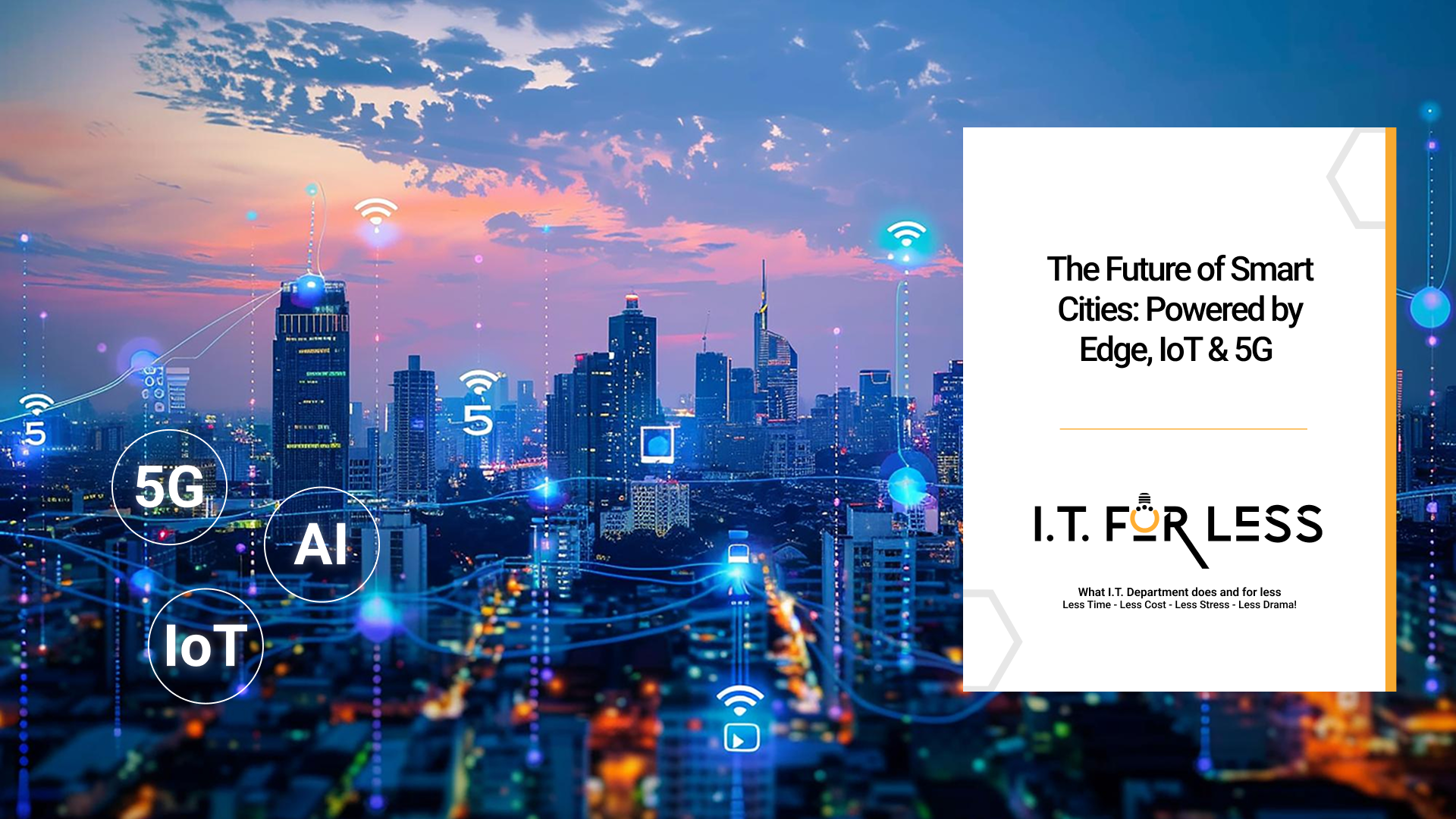The concept of smart cities is no longer futuristic—it’s happening right now. Around the world, urban centers are evolving into interconnected ecosystems where technology enhances daily life, sustainability, and efficiency. At the heart of this transformation are three core technologies: Edge Computing, the Internet of Things (IoT), and 5G connectivity. Together, they’re redefining how cities operate, communicate, and grow.
The Foundation of Smart Cities
A smart city integrates digital technology into infrastructure, services, and public spaces to improve living conditions and optimize resource use. From intelligent traffic management and energy-efficient grids to smart waste systems and connected healthcare, these solutions rely on continuous data collection and real-time analysis.
That’s where Edge, IoT, and 5G come in.
- IoT connects billions of sensors and devices that gather data from streets, buildings, and vehicles.
- 5G ensures ultra-fast, low-latency communication between these devices.
- Edge computing processes data locally, enabling real-time decision-making without depending solely on distant cloud servers.
How These Technologies Work Together
1. Real-Time Data Processing
Edge computing allows cities to analyze data close to its source. For example, traffic cameras can detect congestion and adjust signals instantly—reducing wait times and fuel consumption.
2. Smarter Infrastructure
Connected sensors in roads, bridges, and buildings enable predictive maintenance. By analyzing vibration, temperature, and pressure data at the edge, cities can prevent costly breakdowns and ensure public safety.
3. Efficient Energy and Utilities
IoT-enabled smart grids use edge computing and 5G to balance energy supply and demand in real time. This reduces waste, lowers costs, and supports sustainability goals.
4. Enhanced Public Safety
Connected surveillance systems, emergency response units, and public communication networks powered by 5G ensure faster reaction times and better coordination during emergencies.
5. Improved Citizen Services
From smart parking systems to digital healthcare and connected transportation, IoT and 5G make daily life smoother, safer, and more efficient.
Challenges Ahead
Despite the promise, smart cities face challenges such as:
- Data privacy and cybersecurity concerns
- Interoperability among diverse devices and vendors
- Infrastructure investment requirements
- Regulatory and ethical considerations around data collection
Addressing these early with strong governance and secure architecture is key to long-term success.
The Road to Smarter Cities
The next decade will see cities evolve into intelligent, data-driven ecosystems. The convergence of edge computing, IoT, and 5G will create environments that not only respond to human needs but anticipate them. Cities that invest now will be better equipped to handle population growth, environmental challenges, and future innovations.
Conclusion
The future of smart cities lies in connectivity, intelligence, and responsiveness. By leveraging Edge, IoT, and 5G, urban environments can become more sustainable, efficient, and livable—setting the stage for a truly connected world.
Partner with I.T. For Less today and take the first step toward building smarter, connected solutions that keep your IT flowing as effortlessly as your ambition.
